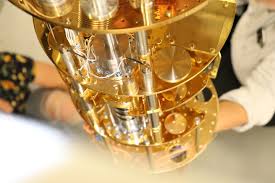A recent publication in Physical Review Letters highlighted the progress made by the HAYSTAC experiment. Although axions were not detected, the project achieved a notable technological breakthrough by significantly broadening the search range for axion masses and their potential interactions.

Understanding Axions
Axions are theoretical particles proposed in the late 1970s as a solution to the strong CP (Charge-Parity) problem in quantum chromodynamics (QCD). They gained attention not only for this theoretical role—where they adjust the theta parameter (θ) in QCD to near zero—but also for their potential as a key component of dark matter.
Axions as Potential Dark Matter
Due to their unique characteristics—such as being electrically neutral, incredibly light, and interacting only minimally with normal matter and radiation—axions are considered strong candidates for dark matter. They are believed to contribute to Cold Dark Matter (CDM), which constitutes approximately 85% of the universe’s matter. Early theoretical work by scientists like Sikivie, Wilczek, Dine, and Preskill demonstrated that axions produced in the early universe could account for the dark matter observed today.
What is the HAYSTAC Experiment?
The HAYSTAC (Haloscope At Yale Sensitive To Axion Cold dark matter) project is a collaborative effort among Yale, Berkeley, and Johns Hopkins universities, focused on the direct detection of axions. The experiment leverages a haloscope—originally conceptualized by Pierre Sikivie—which utilizes a microwave cavity placed in a strong magnetic field to detect axions potentially converting into photons.
In its second phase, HAYSTAC carried out the most extensive frequency search for axions to date and implemented quantum squeezing methods to minimize quantum noise, thereby improving the detector’s sensitivity. Currently, HAYSTAC and Advanced LIGO are the only major physics experiments employing quantum squeezing to enhance measurement precision. This technique refines the quantum state’s uncertainty, reducing random fluctuations and making it easier to detect extremely faint signals such as those expected from axions.




